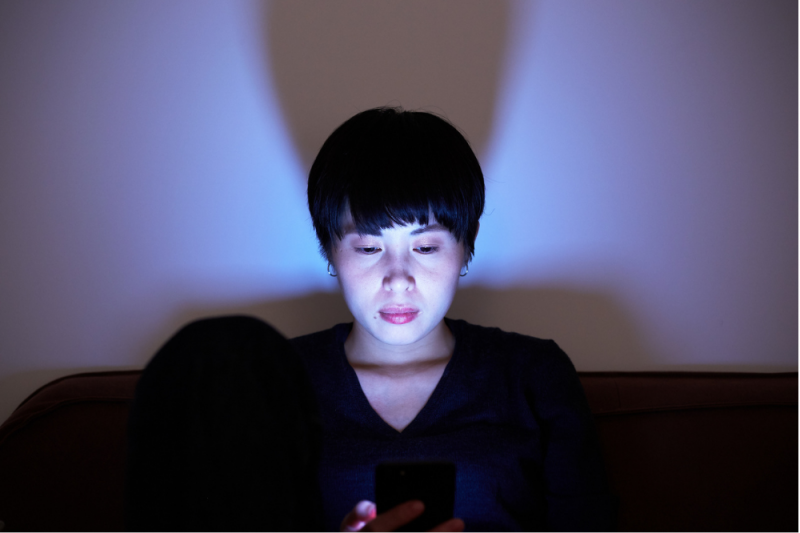
At sunrise a woman on a beach stretches out her clasped hands towards the sun
Light. It’s critical to most life, we need it to see, and it can also have a big impact on our mental health and wellbeing.
Before we understand the impacts of light, let’s dive into the importance of supporting good mental health.
Mental health includes our emotional, psychological, and social wellbeing. It affects how we think, feel and act. It’s important at every stage of life, from childhood through to adulthood. It allows us to manage stress, connect with others and make healthy choices.
Many factors can influence our mental health, including the environment, people, and our lifestyle.
The amount of light we are exposed to is a significant factor that is often overlooked and can have a big effect. As we explore the science behind the relationship between light and mental health, we'll also discover the benefits of light, the use of light therapy as a treatment option, and the risks and side effects of light.
Circadian rhythm
We all have a natural internal clock called the circadian rhythm. This regulates our sleep cycles, hormone production and body temperature.
The circadian rhythm is affected by the daily cycle of light and dark. It helps guide the release of hormones, including cortisol and melatonin, which are important for regulating mood, energy and thinking.
Exposure to light in the morning and darkness at night helps our bodies maintain a healthy circadian rhythm, which is essential for good mental health.
When this rhythm is disrupted, such as by exposure to artificial light at night or lack of natural light during the day, this can affect our sleep which in return affects our mood and mental health.

Types of light that affect our mental health and mood
Different types of light—natural or artificial—and the colour of the light can also affect how we feel. Natural light, which includes sunlight and daylight, is the best source for our mental health. It contains a balanced range of colours that help regulate our circadian rhythm.
On the other hand, artificial light, such as those from our phones and laptops, emit high levels of blue light, which can disrupt our circadian rhythm, especially if used at night or shortly before sleep time.
Sleeping well is important for good mental health.
Different colours of light can affect our mood in different ways. Warmer colours like yellow and orange promote relaxation, and cooler colours like green and blue can trigger alertness and focus.

How natural light improves mental health
Exposure to natural light is essential for good mental health. Research has found that workers in offices with windows received more natural light and had better sleep quality, higher physical activity levels, and lower stress levels than workers in windowless offices.
Natural light reduces symptoms of depression in patients with seasonal affective disorder (SAD), a type of depression related to changes in seasons and daylight.
It can also increase serotonin (a chemical in our brain that controls mood and happiness) and reduce symptoms of depression and anxiety.
Light therapy for those who can’t obtain exposure to natural light
Light therapy is a treatment that involves exposure to bright light to regulate our circadian rhythm and improve our mental health. It is often used to treat SAD, major depressive disorder and sleep disorders.
It works by sitting or working near a blue light therapy box for around 30 minutes. To gain the most benefit, you must use this regularly, in the morning, with a timer and not look directly into the light.
Using a blue light therapy box doesn’t replace anti-depressant or anti-anxiety medication. It should be used in conjunction with your medication as it helps balance and activate the serotonin in our brains.
While there are many benefits to using light therapy, it’s best to seek advice from your doctor beforehand. It might not be the best option for people with bipolar affective disorder, vision-related conditions, on certain medications or those sensitive to light.
How to reap the benefits of light for your mental health
Now that we understand how light can benefit mental health, you’re probably wondering how you can incorporate more of the right kind of light into your life
For those who don’t have regular work hours or have lives that require a lot of travel, here are some ways everyone can light up their lives:
- Install more mirrors at work or home. Mirrors allow light to bounce around the room.
- Keep curtains and blinds open. If possible, let the sun wake you up in the morning.
- Get outdoors when you can. Go for a morning walk or sit outside for your breakfast.
- Exercise outdoors or near the window at home or at the gym.
- Try a light-therapy lamp.
When to ask for help
If you’re struggling with your mental health, support is available from general practitioners (GPs) and other medical practitioners, psychologists, social workers, and occupational therapists. Eligible people can receive up to 10 individual and up to 10 group allied mental health services each year.
The first step is to get a mental health treatment plan from your GP. This plan identifies the health care you need and outlines the goals you and your doctor want to achieve.
There are also online and phone support options available, and you can find them at Your mental wellbeing
More information
- How shift work affects your health | Queensland Health
- About mental health | Centres for Disease Control and Prevention
- How lighting choices can affect your mood | Psychology Today
- How light therapy can help with seasonal affective disorder (SAD) | Cleveland Clinic
- "Shedding light on light”: A review of the effects on mental health of exposure to optical radiation | International Journal of Environmental Research and Public Health
- Impact of Window and Daylight exposure on overall health and sleep quality of office workers | Journal of Clinical Sleep Medicine